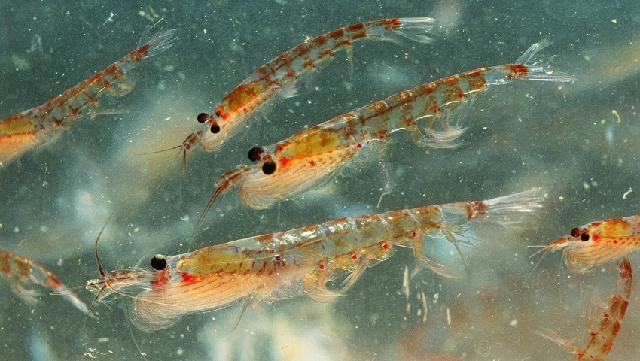The ocean’s real heavyweight is a vital but poorly understood creature, say scientists.
Use this thought-provoking article with students in years 4, 6, 7, 8, 9, and 10 studying Biological, Chemical or Earth and Space Sciences. It would be particularly suited when studying the interconnectedness of species including ecosystems and food chains. It should help students to understand how such a small species can have such a huge impact on the world.
Word Count: 616

About 380 million tonnes of Antarctic krill calls the Southern Ocean home and play a vital role in carbon storage and nutrient distribution – but we don’t know nearly enough about it, according to a new scientific paper.
Despite the species’ huge biomass and its importance in the planet’s ecosystems and food chain, gaps in our knowledge mean we don’t understand how it might be impacted by climate change and commercial fishing, and what a reduction in krill population might mean for the rest of us.
It’s time we found out. Because Antarctic krill (Euphausia superba) isn’t just whale food.
Researchers led by Emma Cavan from the Institute for Marine and Antarctic Studies in Tasmania, Australia, and Imperial College London reviewed current scientific knowledge of the role of krill in processes that each year remove up to 12 billion tonnes of carbon from Earth’s atmosphere.
Writing in the journal Nature Communications, the team says there are concerns for the future of E. superba in a rapidly changing climate.
Already there are reports of declining krill density in the south-west Atlantic, which has warmed rapidly during the past century and is also the location of the main Antarctic fishery.
That’s a worry because of the many roles performed by krill.
For starters, it’s a core part of the diet of whales, seals, penguins, squid, and fish. But that’s the obvious bit.
Beyond that, krill is a key component of what is known as the biological pump, which gets carbon dioxide out of the atmosphere and sequesters carbon at the bottom of the ocean.
It works like this: Single-celled phytoplankton near the ocean’s surface take up carbon dioxide during photosynthesis and store the carbon. Then the krill eat the phytoplankton or other organisms that have consumed phytoplankton. So now the krill have the carbon.
Then comes the miracle of krill poo. It is particularly dense and heavy, and falls rapidly to the bottom of the ocean, taking tonnes of carbon with it.
Any carbon that the krill don’t excrete is likely to be taken up by its predators, such as whales, which also go the bottom of the ocean when they die, sinking more carbon.
Cavan says that krill faeces account for the majority of sinking carbon particles found in both shallow and deep waters in the Southern Ocean.
“The Southern Ocean is one of the largest carbon sinks globally, so krill have an important influence on atmospheric carbon levels and therefore the global climate.”
It isn’t all about carbon sequestration either. Antarctic krill also distribute nutrients such as iron, both in their faecal pellets and when shedding their shells.
Krill is commercially harvested, mainly for aquaculture and animal feed. A little over 260,000 tonnes are netted every year in Antarctic waters – a relatively small portion of the total krill population.
But the researchers are concerned that the implications of commercial fishing are not well understood.
Cavan says management of the krill fishery currently centres on sustainability and krill’s role in supporting megafauna such as whales, with little attention given to assessing its significance in the carbon cycle and ocean chemistry.
“There is no consensus on the effect that harvesting Antarctic krill could have on atmospheric carbon and ocean chemistry nor, for that matter, how growing whale populations might also affect krill numbers.
“Southern Ocean ecosystems and chemical processes are highly complex and poorly understood, and our lack of knowledge about the extent of krill’s ability to affect the carbon cycle is a concern.
“Our study has shown there is a pressing need for further research to address these and other questions about the significance of krill, as well as for more accurate estimates of their biomass and distribution.”
Login or Sign up for FREE to download a copy of the full teacher resource





